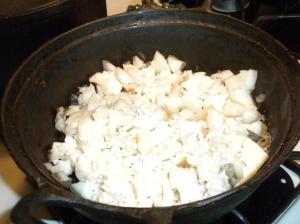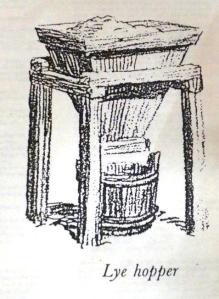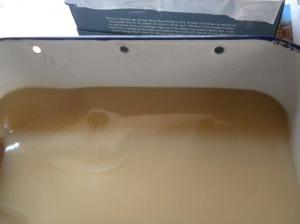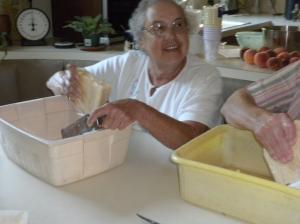
For reservations to experience “nkwiluntàmën: I long for it; I am lonesome for it (such as the sound of a drum)” by Indigenous artist Nathan Young, please go to https://nkwiluntamen.com/
“It’s made of WHAT?”: Making 17th-Century Soap
- October 20, 2011
- Posted By: Pennsbury Manor
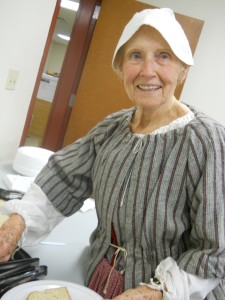
To provide a little background information, soap was a necessary all-purpose supply to keep in any 17th-century home. You used the same basic lye soap to wash yourself, your dishes, and your laundry. Alum could be mixed to make a specialty soap for removing laundry stains. Herbs like lavender and lemon balm could also be added for scent. Early Pennsylvanians could have purchased soap at the markets in Philadelphia (or Burlington, NJ which was just down the river from Pennsbury!). But if you had the time, making your own soap would be a good way to save some money.
It was made of two basic ingredients: tallow and lye. Both ingredients were easy to come by – tallow, or rendered animal fat, was regularly available from the kitchen. Penny taught us a modified version of the original Lye Soap process, which I’m happy to share with you now! **Click on images to enlarge**
Penny’s Castile Soap
1. Prepare the Suet
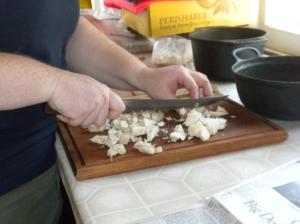
2. Render the Suet
Add 2-4 inches of water and 2 Tbsp. salt to the suet and place pot on stove-top (or fire if you’re doing this at a historic site). Slowly bring to a boil – you don’t want to heat the pot too fast, or the suet will burn. Allow the tallow to melt off, then remove from the heat.

Then take the pot of melted suet and pour onto cheesecloth. Allow to drain for several minutes, shifting mixture and even squeezing the cloth so all usable fat seeps through. Then remove the cheesecloth and toss the sifted mixture. Congratulations, you now have tallow! Now leave it to cool to 95°-100° F.
3. Making Lye: A Shortcut
Penny strongly recommends a shortcut for making lye water, as the 17th-century method is time-consuming and messy. However, if you’re a stickler for authenticity (which we applaud!) and want to go through the original process, you will need to find/create a Leeching Barrel, like the ones you see here (engraving from unknown source).
The leeching barrel would be prepared with layers of straw and ash from the fireplace. By pouring boiling water into the barrel, the lye chemical would be stripped from the ashes and combine with the water, which would drip down into the pot at the bottom. 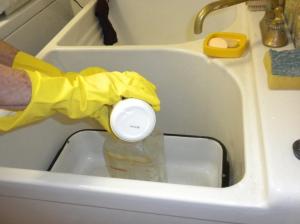
4. Mixing the Soap

Combine oils in large pot, then SLOWLY pour lye water into the fats, stirring constantly but gently. The mixture will slowly become the consistency of applesauce. Depending on the tallow used, this could take anywhere from 15 minutes up to an hour.
5. Molding the Soap
Gently pour or ladle mixture into mold(s).
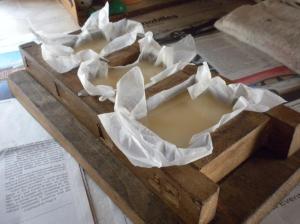
6. Milled Soap (optional)
To make a more refined soap, you could mill (shave) the hardened soap and remelt and mold. Modern soap-makers often mill their specialty soaps and add in additional scented oils, herbs, and coloring.
**Caution, use fresh soap rather than old, hardened pieces – it won’t melt or dye properly and you could have a crazy time trying to make it behave!!**
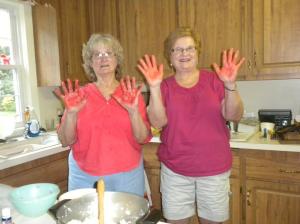
By Hannah Howard, Volunteer Coordinator
